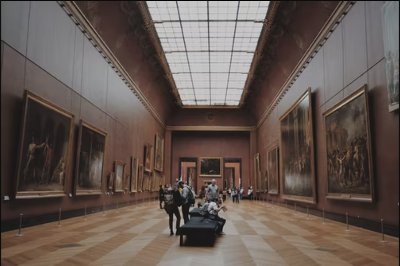5 Ways Museums Can
Improve the Learning Process
Learning neither begins nor ends in the classroom. You can learn about new things at home, work, on the streets, and almost anywhere. Museums are unpopular venues for learning, but they possess significant learning potential.
Museum collections give students a physical and historical link to time, places, events, and people. They allow them to explore the growth of human history and diverse cultural heritage while understanding and learning some valuable lessons.
That’s why in this article, we discuss museums as valuable locations for learning and give five ways they can help the process. There’s a lot to discuss, so let’s get started!
Importance of Learning with Museums
Learning at museums not only teaches students about the historical significance of artifacts but also how to respect different cultures and the dynamics of diversity. Exploring museums allows students to actively participate in gaining knowledge and expressing their opinions and emotions.
Museums are catalysts used to promote multidimensional learning, developing critical thinking abilities, and adopting lifelong learning skills.
Learning in museums and other non-official environments is known as informal or free-choice learning. This learning method is qualitatively different from that in schools, producing various results. The adoption of museum learning is the source of new teaching and learning practices that focus on concrete materials like objects and exhibits.
5 Ways Museums Can Facilitate the Learning Process
Now that we have touched on the value of museum education in learning, let’s look at methods that prove it. Here are five ways museums improve learning.
1. By teaching, critical thinking, and other important dispositions
Learning in museums is primarily an autonomous experience. Most visitors actively participate in the exhibition, monitoring and reflecting on their discoveries and new knowledge.
Students can approach various information with a unique mindset that provides a fertile ground for critical thinking and analysis. To effectively teach critical thinking skills, encounters with exhibits should be prolonged and include group conversations. This is often not possible in more traditional and classroom-oriented learning activities. Also, most times, you can find instructors in museums that can do projects related to history. This is especially valuable to students who often ponder the question, “where to find a custom thesis help service?”
2. By providing genuine interest and excitement in school projects
Museum learning can excite students about various disciplines and study fields. To achieve this, students must be given the leeway to explore independently. Instructors or teachers in this scenario also have to ensure that the questions posed on the trip represent real disciplinary challenges. When this form of learning is adopted, students can acquire a genuine and deep interest in school projects. This can, in turn, foster positive development in learning.
3. Through teaching subject-specific content and skills
Although classrooms are best for teaching subject-specific content, museums can also take learning to a higher level by doing the same. For example, learning with concrete visualization can facilitate a deeper understanding of fields closely related to history and exhibits. However, this should be done once in a while, as classrooms are still the ideal location for subject-specific learning.
4. By expanding the general world knowledge of students
Museums can facilitate learning by providing a more practical examination of subjects. They effectively introduce new knowledge to students through new vocabulary and objects they might never have encountered before. This immerses them in a world bey ond theirs, expanding their horizons.
5. Through the increase in students’ cultural capital
Museums can transform non-traditional museum visitors into regular museum-goers. One of the best avenues is to educate students enough to pique their interests. This can be in the form of detailed exhibitions or assistance with archaeological knowledge. If these elements relate directly to school work, museums may help with assignments in the form of writing services. Sometimes, these students do not suddenly transform into regular museum-goers but join programs that feature related activities. However, gradually they gain cultural capital and have a rich history and knowledge to facilitate their learning processes.
Conclusion
Museums have a lot to provide in terms of new education methods and perspectives to students. Although these applications are not as common as one would like, their value is often undeniable.
